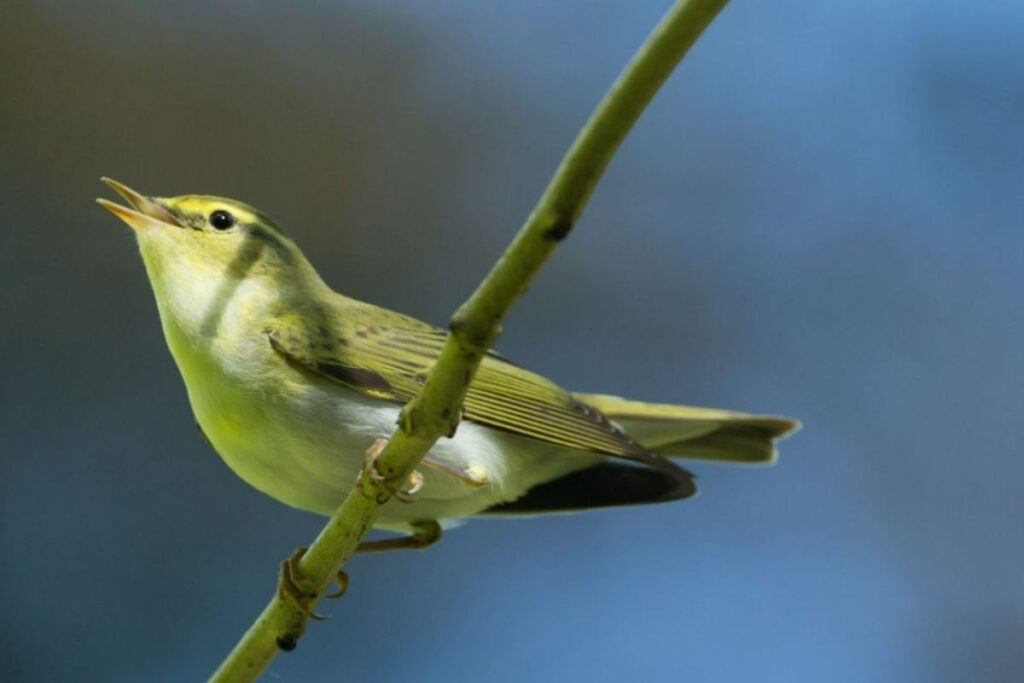Tracking reveals migration mystery of rare British bird

Geolocator tracking has revealed, for the first time, the West African wintering grounds of UK-breeding Wood Warblers, which have seen their numbers crash by two-thirds since 1995.
Researchers from the British Trust for Ornithology (BTO) and RSPB hope this new knowledge will help uncover the threats the birds face at each stage of their long annual journeys.
Reasons for the Wood Warbler’s steep decline have so far remained unclear – but could all that be about to change?
Wood Warblers are summer visitors to the UK, where dwindling numbers have landed them on the Red List and their sparkling song (sometimes likened to the sound of a spinning coin) at risk of vanishing from the countryside for good. Recent decades have seen serious declines in many birds that migrate to Africa, but a lack of information about their lives after they leave Europe has hampered attempts to understand why this is.
By fitting tiny geolocators to four Wood Warblers breeding on Dartmoor and in the New Forest, scientists found that the birds migrated in a clockwise loop that began with their departure from the UK in late July. They spent most of August in central southern Europe before crossing the Sahara in a non-stop flight lasting around 36 hours.
After a short stop just south of the desert, the tracked Wood Warblers spent around two months at a stopover to the southwest in the Sahel. They then continued southwest to the tropical forests of West Africa around Liberia and Sierra Leone, where they spent the rest of the winter. The data from one bird showed it did not return to Europe via its outbound route, but instead crossed the Sahara further west and continued north via Spain and France.
Assessing the threats migrant birds face throughout the year – not just after they arrive in the UK – is key to ensuring their continued survival. Now that the Wood Warbler’s main stopover and wintering sites have been identified, we are one step closer to understanding the true impact of climate change, habitat loss and other factors on this bewitching woodland songster.
Dr Chris Hewson, BTO author on the paper, said: ‘Many of our most charismatic birds are essentially African species which migrate here to breed, but until recently we have known little about how they spend their lives away from these shores. Tiny tracking devices are now changing that, illuminating our lives with new understanding of these birds and hopefully moving us towards being able to do something about their declines.’
Dr Malcolm Burgess, lead author, said: ‘Most birds that migrate to sub-Saharan Africa have seen huge population declines over recent decades. Understanding why migrant birds are struggling is very challenging, partly because there are so many places to look for the problems that it can be hard to know where to start. This new research is an important step forward.’




